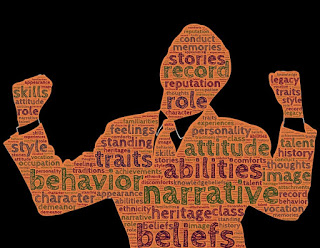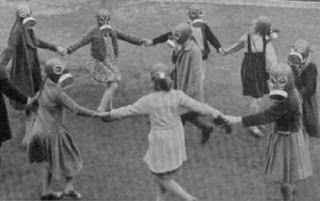Whenever you can connect with your personal, past experience, that always makes for a better blog, because no one can write that blog but you. Here is an example of a student sharing about her experience with a non-governmental organization (NGO):
 In 2008, I worked with an NGO called WOWAP which is situated in Dodoma Region Tanzania. It is dealing with human rights and capacity building. I was assigned to a project, whereby we trained about 150 women and men from different villages in Tanzania on enhancing land ownership to pastoralists. The training based on the right of occupancy as stipulated on “land act 1999”. All participants were trained to understand their rights as citizens, to own, use, sell or acquire land, the procedure for acquiring land and the role of women in decision making. Due to customary laws, many women in Tanzania do not have the power to own land legally. The emphasis was given to women because in many parts of Tanzania we have a patriarchy system whereby men are the heads of the house and make all decision on any matters relating to a family or community. Due to cultural beliefs, women fear to question or make any decision against men’s decision. Read More.
In 2008, I worked with an NGO called WOWAP which is situated in Dodoma Region Tanzania. It is dealing with human rights and capacity building. I was assigned to a project, whereby we trained about 150 women and men from different villages in Tanzania on enhancing land ownership to pastoralists. The training based on the right of occupancy as stipulated on “land act 1999”. All participants were trained to understand their rights as citizens, to own, use, sell or acquire land, the procedure for acquiring land and the role of women in decision making. Due to customary laws, many women in Tanzania do not have the power to own land legally. The emphasis was given to women because in many parts of Tanzania we have a patriarchy system whereby men are the heads of the house and make all decision on any matters relating to a family or community. Due to cultural beliefs, women fear to question or make any decision against men’s decision. Read More.
via Asha Habibu.

 Contagion is one of the most feared words in mankind’s lexicon. Contagion conjures thoughts of disease and human devastation. Man has witnessed and documented contagions going back hundreds of years and the destructive impact that it has made. Disease such as the bubonic plague is estimated to have killed 100 million people in the 1400s and had such an impact that it spawned the nursery rhymeRing Around the Rosie. Contagion today is still in the forefront of people’s minds and has become main stream with the 2011 movie Contagion that shows how quickly a deadly virus can spread in today’s global society.
Contagion is one of the most feared words in mankind’s lexicon. Contagion conjures thoughts of disease and human devastation. Man has witnessed and documented contagions going back hundreds of years and the destructive impact that it has made. Disease such as the bubonic plague is estimated to have killed 100 million people in the 1400s and had such an impact that it spawned the nursery rhymeRing Around the Rosie. Contagion today is still in the forefront of people’s minds and has become main stream with the 2011 movie Contagion that shows how quickly a deadly virus can spread in today’s global society. 

 My freshman year I participated in the marching band as a piccolo player, and my sophomore, junior, and senior years I have been a rank captain for the piccolo section. Being part of a leadership team within the band, I have had the opportunity to learn a lot about leadership from our band director, Dave McKee. One of the things that has been most influential to me has been Dave’s work to empower all his student leaders, and inspire everyone to a higher level of leadership.
My freshman year I participated in the marching band as a piccolo player, and my sophomore, junior, and senior years I have been a rank captain for the piccolo section. Being part of a leadership team within the band, I have had the opportunity to learn a lot about leadership from our band director, Dave McKee. One of the things that has been most influential to me has been Dave’s work to empower all his student leaders, and inspire everyone to a higher level of leadership. 